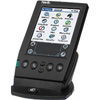Originally published: Mar 01, 2001 Printable PDF Version
Articles Archives


Our work on several large-scale enterprise mobile design projects has led to some discoveries in the area of usability, which seem to repeat themselves across several vertical industries. We have a lot more to learn, however the following ideas should help shed some light on the process of creating successful mobile interfaces.
By using this approach, your team can implement an XML-based message format to exchange data between the server and various client devices.
The most troublesome usability issues arise when you try to implement complex, multi-step tasks that are so common with enterprise applications. For instance, the task of capturing the details of a sales order on a mobile device can be very cumbersome and time consuming as compared to using a paper-based method or traditional full-sized laptop. Implementing complex tasks such as this require a rethinking of the design and the methods used to collect the sales order data. The use of additional defaults, role-based personalization of the user interface, and extensive use of progressive disclosure techniques to shield non-important data from the user are critical for creating usable, complex mobile applications.
In addition, you need to rethink normal navigation and content display to deliver clear, concise content with minimal navigation menus, so that the limited display area can be devoted almost entirely to the content in front of the user. Of course, you must completely rethink complex desktop interaction techniques, like drag and drop and multi-windows, and address them with visual design patterns more suited for the limitations of a mobile deployment platform.
Successfully deploying your mobile applications requires a very close working relationship with your end users and product managers. Mobile solutions are deployed on very personal devices that are used while performing other tasks such as driving, walking, and meeting with other people. If your design forces the user to focus on the interface and not at the task at hand, lower productivity and poor user acceptance will likely result. Creating a seamless interface with the proper form factor and matched with appropriate user tasks can create a very empowering environment for your end users. This can enable them to gain significant productivity benefits from the emerging wireless web.